

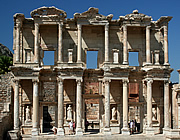
The magnificent ruins of Ephesus, bustling with tourists, the splendour of the ruins at Aphrodisias, empty and atmospheric, both evocative of a glorious past.
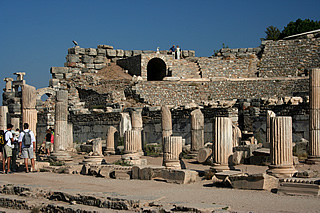
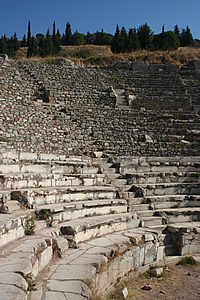
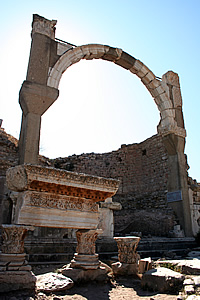
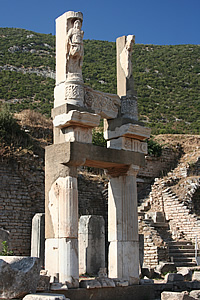
For more than 2500 years there has been a city on or near this site just west of Selçuk. Strategically it was important as it lay close to the sea with a harbour and interest in trade routes. After the death of Alexander it was part of the land controlled by Lysimachus along with Pergamon but fell to the Romans in the third century B.C. when it was handed over to Pergamon. In the third century A.D. the silting up of the harbour heralded a slow decline.
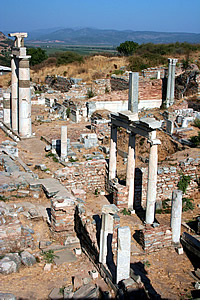
The city was built around the base of Mount Panayir with its large harbour to the west. Almost everything to be seen today at Ephesus is of Roman origin.
At the top of the site (south east) a colonnaded street leads west to the second century A.D. Odeon, sometimes called a Bouleuterion, where the senate or Boulea would meet. It also functioned as a concert Hall or Odeum.
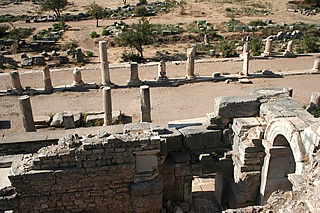
Close to the Odeon is the Prytaneion where the sacred flame, symbolising the heart of the city, was kept eternally burning.
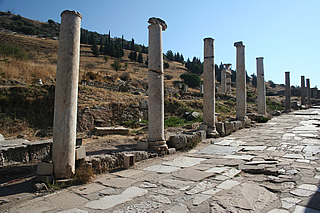
On the opposite side of the street were fountains, temples and the State Agora.
Just before the Herakles Gate a southern area leads to the 1st century A.D. with the Pollio Fountain on the left and, further along, the Temple of Domitian, from the same era, on the right. The temple is dedicated to an emperor rather than to a god.
The Pollio Fountain was named for the rich Ephesian family that financed its construction.
Water delivery in the city was typically well-organised via aqueducts and clay pipes.
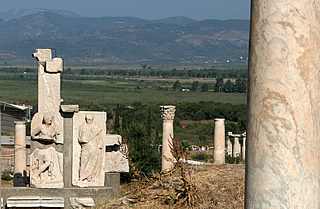
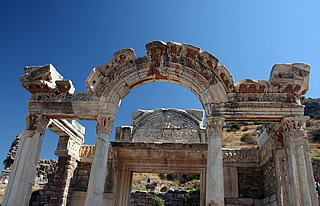
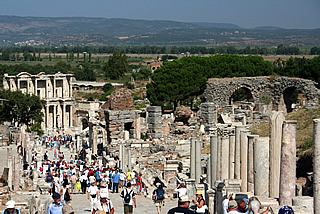
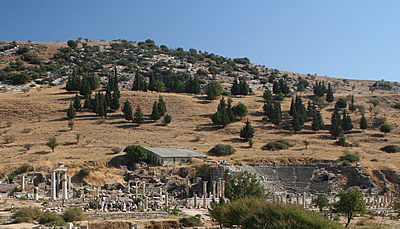
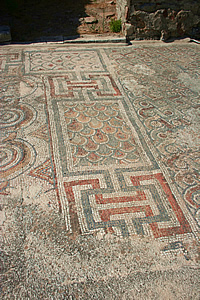
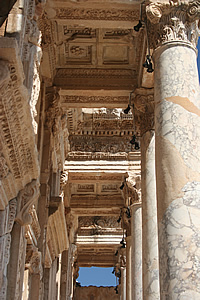
Through the Herakles Gate Curetes Street descends past a small but beautiful building with an entrance arch supported on four Corinthian columns. This was a temple dedicated to Hadrian who visited Ephesus in 128A.D.
Opposite the Hadrian Temple is, for us, the most fascinating part of the site. Here, in a climate-controlled enclosure, are preserved terraced houses dating back to the first century A.D. Photography was not allowed in this area. The frescoes on the substantial walls and mosaics on the floors are wonderful and it's revealing to see the domestic layout almost intact so that imagining how these people lived 2000 years ago becomes much easier.
The two-storey courtyard houses were built on the terraced slope of Mount Koressos. They have interlinking rooms with fountains and underfloor heating. Some had marble panels on their walls but mostly the walls were plastered and frescoed. Many rooms had lovely mosaics on the floors.
Admittedly these houses would be for the wealthier citizens but they are fascinating nonetheless - highly recommended.
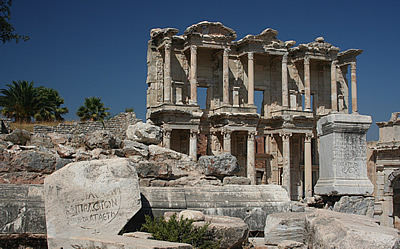
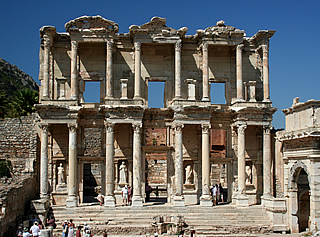
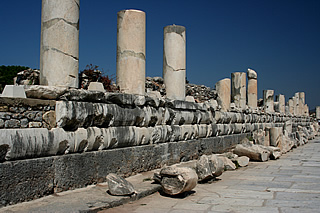
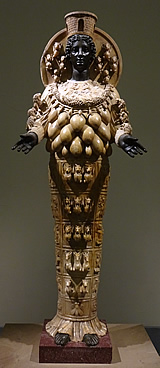
Of course the Library of Celsus has to take a top spot too - it is a truly impressive structure.
The Library was built in the second century A.D. to honour Tiberius Julius Celsus Polemaeanus, governor of Asia, by his son. The tomb of Celsus lies below the ruins.
The library faces east, catching the morning light, and held over 12000 manuscripts. It was one of the most famous libraries of the ancient world along with those of Alexandria and Pergamon.
Later it was damaged by fire and fell into disuse as a library. Some time in the tenth century an earthquake caused the facade to collapse.
Marble Street - literally paved with marble - stretches from the Library to the Grand Theatre.
Between was the Commercial Agora, around 100m square, with covered arcades shading shops along its perimeter. What a bustling, vibrant place this must have been at the peak of its prosperity!
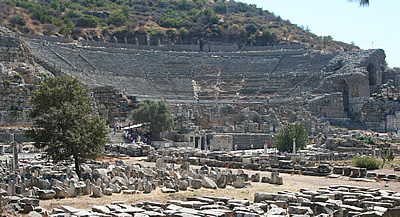
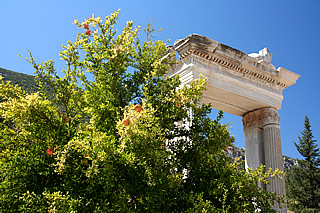
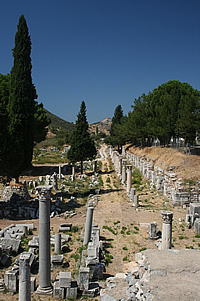
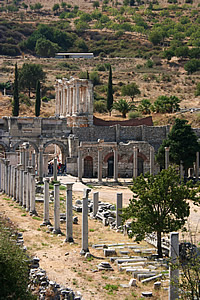
The Theatre was the largest in the region with a capacity for an audience of 25,000. Originally a Greek building from the time of Lysimachus, it was significantly enlarged by the Romans.
It faces west, perhaps to catch cooling sea breezes.
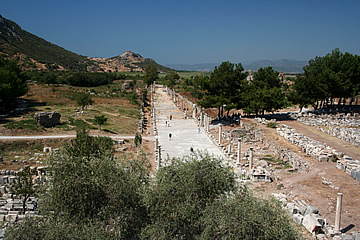
The Street of Arcadius leads from the theatre west to the site of the ancient harbour. This would have been a street designed to impress vistors and was apparently even lit at night.
The harbour must have been a fascinating sight, ships unloading from all over the empire, merchants haggling, bars and food stalls in abundance, no doubt, alongside busy suppliers, chandlers and workshops.
Of the famed Temple of Artemis, nearer to Selcuk than this site, very little remains to be seen.

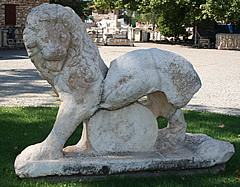
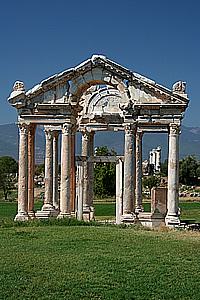
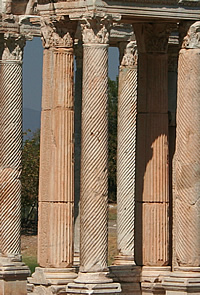
The owner of the Tat Restaurant in Selçuk had introduced us to an English Professor, based in Turkey. He was very interesting to talk to, involved with the setting up of the Crisler Library at Ephesos and very kindly invited us to the opening - a very enjoyable evening. Discussing Turkey we asked him where we should visit, given that we were already planning to visit Ephesus etc. He immediately recommended Aphrodisias, said it was the most stunning site and we really should visit if we could - so we did.
His recommendation led us to one of the most impressive places we have seen - and not only in Turkey. So much remains that we spent hours here exploring, and could have spent longer!
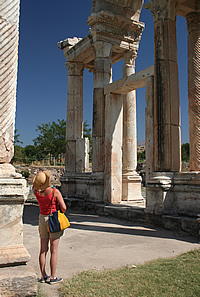
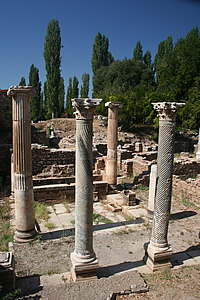
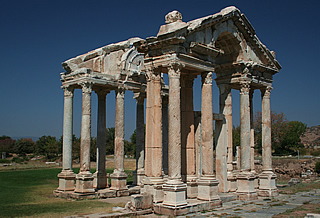
There has been some kind of settlement here for many millenia, but it is as an Hellenistic-Roman city that it flourished for 700 years from the first century B.C. The city was well-positioned, on the fertile plain of the Meander River, about 100 km inland, perfect for food crops such as grains, nuts, fruits, figs, olives as well as cotton. There was also good grazing for sheep and an important trade in wool and cotton. Marble quarries nearby kept the skillful sculptors well-supplied and the city was famed for its sculptors' workshop.
The monumental gateway of the city is particularly impressive, the Tetrapylon, four groups of four columns forming theentrance. Even standing isolated as it does now, it is not difficult to imagine how awe-inspiring it must have been to visitors.
The city was highly important in the cult of Aphrodite, patron goddess of the city and of the Julio-Claudian Emperors, so it is not surprising that it had an impressive temple dedicated to the goddess. A number of columns but little else remains of this once hugely important building - it was virtually completely dismantled and rebuilt as a Christian basilica then later this in turn was badly damaged.
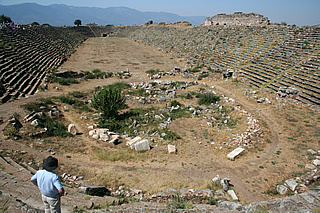
From here we made for the stadium at the north end of the site. The stadium is just incredible: at 270m in length and with seating for 30000 it is one of the largest and the best preserved. Unlike most Hellenistic stadia, this one is curved at both ends and also bowed in the middle so that it begins to approach the shape of a Roman amphitheatre. The eastern area seems to have been used as a small amphitheatre.
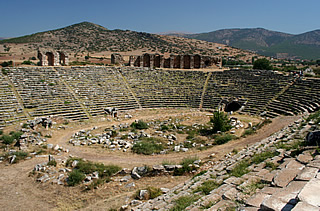
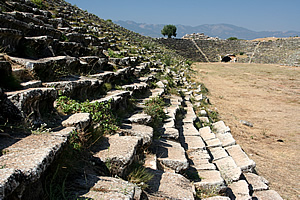
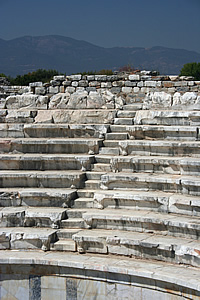
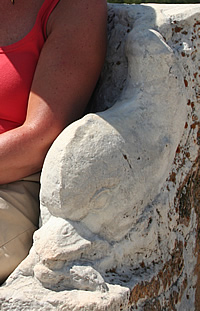
If the Tetrapylon and Stadium were all that were here it would still have been worth the long drive, but there are several more gems at Aphrodisias. Archaeological work is still being carried out but only the imperial cult temple to Aphrodite and the Julio-Claudian Emperors, the Sebasteion, was off limits when we visited.
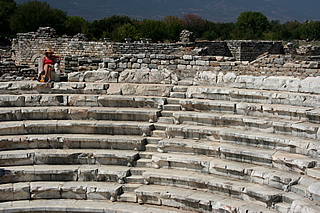
My personal favourite is the Bouleuterion (Odeum/Odeon), the city council meeting place, also used for musical performances, poetry recitals, etc. It is a beautiful marble theatre, with staircases pointed with lion paws, and seats of honour with dolphin armrests. It is in very good condition, having been buried in mud for a thousand years.
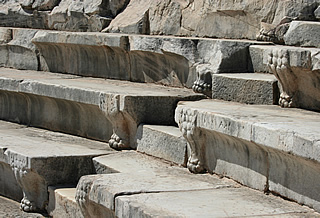
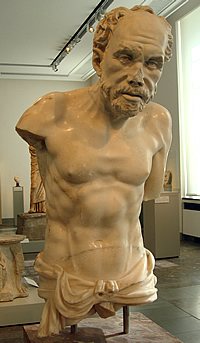
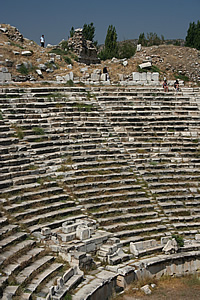
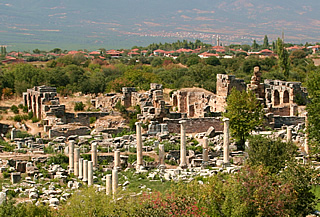
To the south of the Bouleuterion are the North and South Agoras. West of the South Agora lie the Baths of Hadrian , a huge construction of five barrel-vaulted chambers. New York University has conducted many years of investigations at Aphrodisias and their website has a lot of fascinating information including that the "baths, the forecourt, and the west stoa of the South Agora (which led into the complex) were richly decorated with sculpture. In the baths were found, for example, a statue of an Old Fisherman and a statue group of Achilles and Penthesilea, ...". Somehow it's that statue of an Old Fisherman which brings the place to life. In 2013 we saw the lovely Old Fisherman sculpture for ourselves in the wonderful Pergamon Museum in Berlin. Though the head is a plaster cast of the original, discovered at Aphrodisias in 1989. The expression and detail are beautiful.
South west, walking through many ruinous remains, we came to the very well-preserved Great Theatre. Hellenistic in origin, built in the third century B.C., it underwent several renovations and enlargements in the following centuries with seating for upto 15000.
From the top level of the theatre it is possible to look over much of Aphrodisias, from the red brick walls of the Baths of Hadrian, the long sweep of columns down to the Agora Gate and behind over the Odeum, to the Stadium in the distance. It's a sight not to be missed.
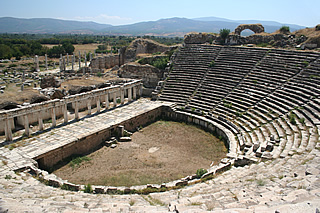

Reference: Traveller's Guide: Turkey by Dux Schneider.
Aphrodisias www.nyu.edu/gsas/dept/fineart/academics/aphrodisias/aphrodisias.htm
Theatre at Aphrodisias http://www.whitman.edu/theatre/theatretour/aphrodisias/aphrodisias.htm